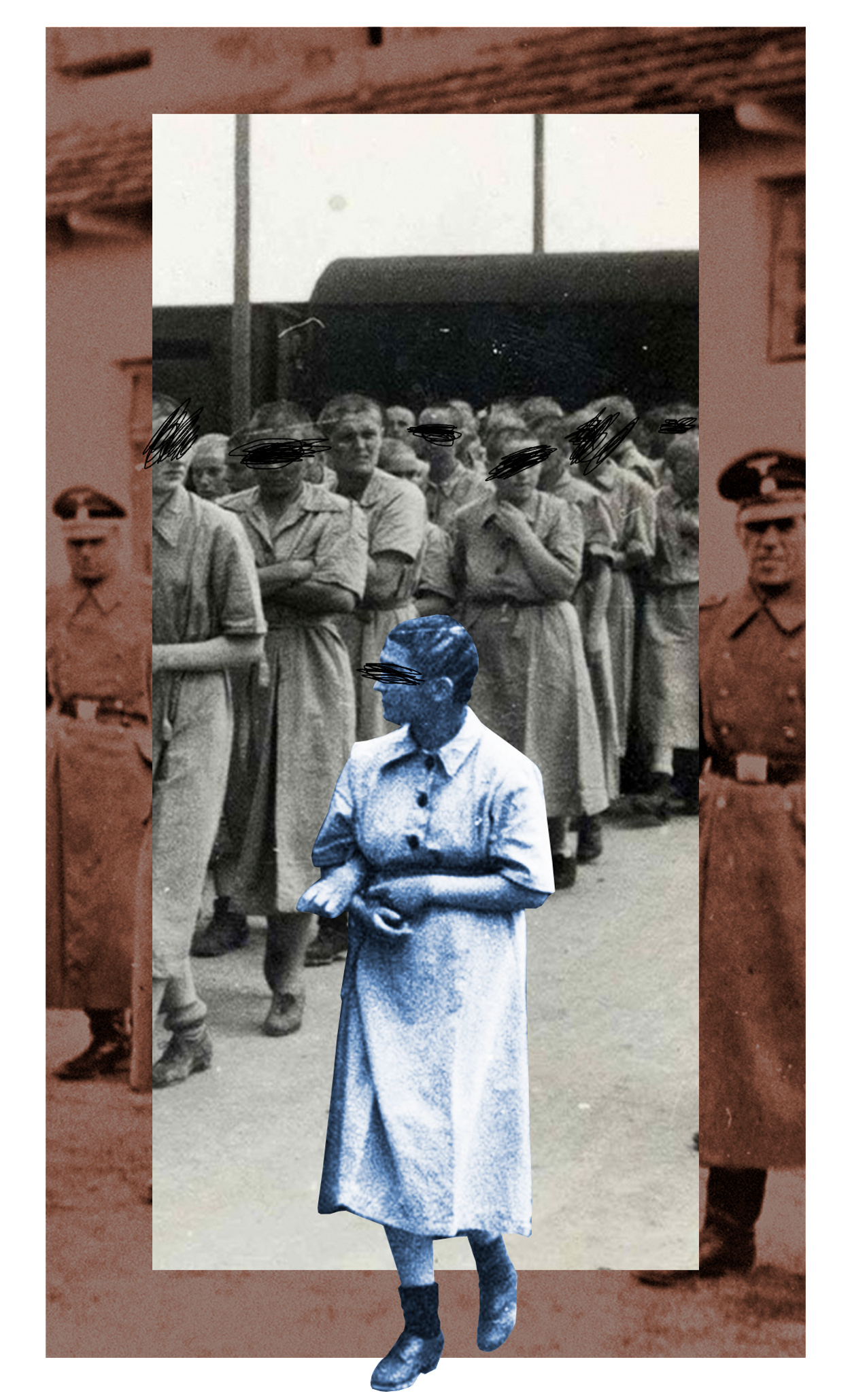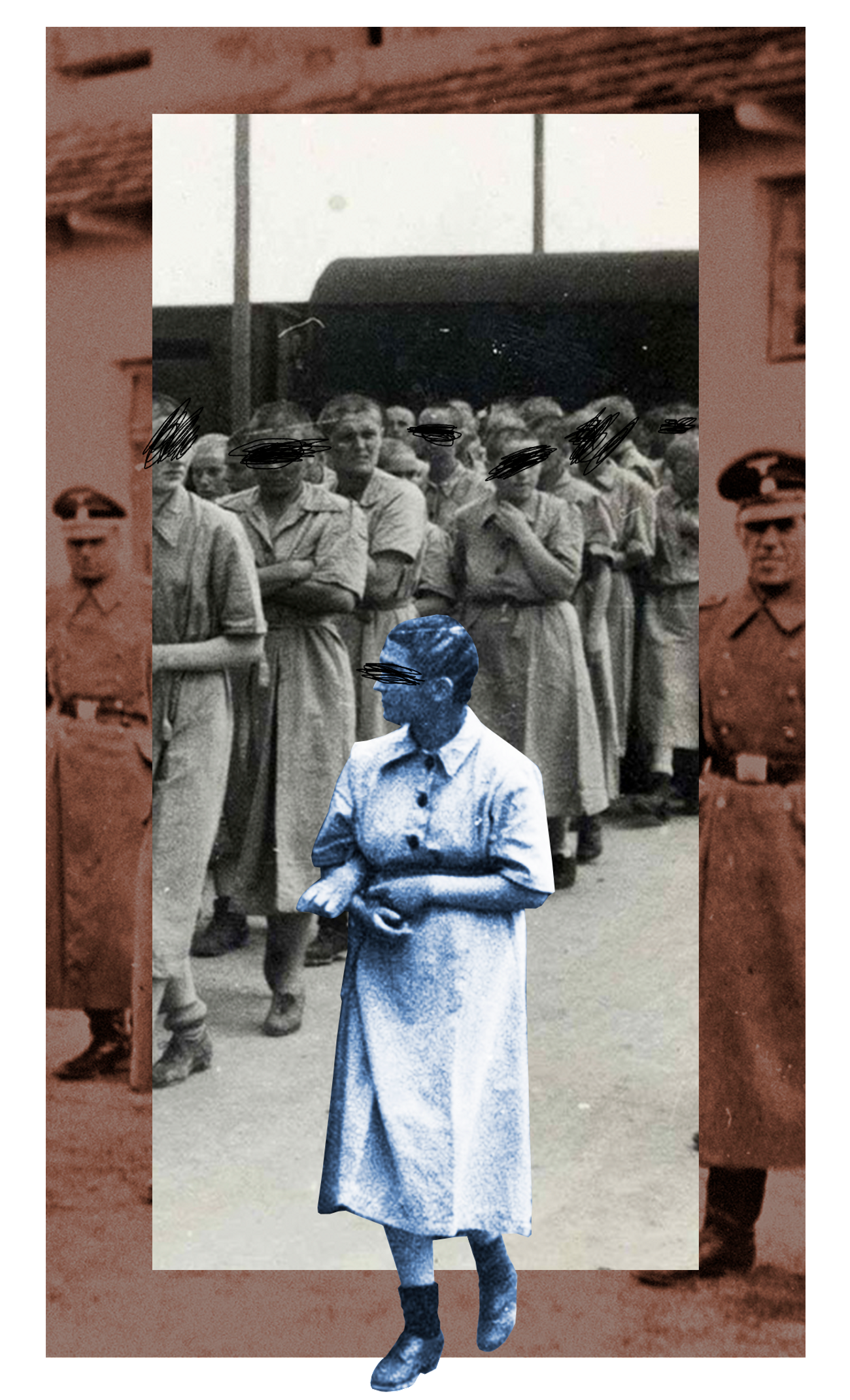The Missing Stories of Sexual Abuse During the Holocaust
Two Israeli researchers uncover Nazi crimes that targeted their victims because of their gender, and the postwar narrative of suspicion that ensured their continuing silence




We were liberated from the camp by the Red Army—it was horrible. The soldiers were like wild horny animals—no girl and no woman were safe. My friends and I found a place to hide in barracks full of former prisoners, all men. The men who stayed in that barracks were tired and therefore incapable to rape us, and the Soviet soldiers didn’t look for us in that barracks.
This confession reached us in 2016. On the other side of the phone was Anna, an Israeli citizen, a woman who introduced herself as a Holocaust survivor who had just read our book in Hebrew, titled How Did You Survive.
We were not surprised. Anna wanted to assure us that although war was a dangerous time for girls, she nevertheless “succeeded in escaping its gender’s fate.”
Why was it so important for Anna to share with us a narrative of a spotless past?
We chose to answer this enigmatic question by listening to the stories of 23 women and three men, all Holocaust survivors and Israeli residents aged 75 to 93. As Israeli academics and researchers of people in stressful situations, we were quite familiar with the horrors of war and with the specifics of World War II. Yet, we were not aware of the war against the suspicion that these women had been fighting ever since they set foot in their homeland—Israel.
At the time, even though little was known about the Holocaust, suspicions prevailed: “If you survived that terrible war, you must have been violated. You must have used your body, or you have merely been raped.” The most beautiful female survivors could not escape this hidden blame.
Similar suspicions emerged in postwar Israeli literature, poems, and artworks. Notable in this regard is the poem by Yitzhak Sadeh, the mythological commander of the Palmach (the major Jewish resistance organizations of the Yishuv, the pre-1948 Jewish population of Israel), which he titled “My Sister on the Beach.” In it, Sadeh depicts an encounter with a young female Holocaust survivor, real or imaginary, who had found her way to Israel from Europe via an illegal refugee boat:
Darkness. On wet sand my sister stands: Dirty, barefoot, her clothes are ripped and her head is down as she stands and weeps.
I know that a tattoo is imprinted on her flesh; For officers only.
While Sadeh probably intended to raise empathy and compassion toward this poor immigrant, one wonders if he would be so suspicious regarding a survivor’s past if the subject of his poem was not a female survivor, but a male. In his poem, Sadeh provides the woman an opportunity to defend herself: “Am I worthy that young healthy boys risk their lives for me? No, there is no place for me in the world. I should not live.”
We listened carefully to the response that Sadeh placed in the girl’s mouth. One of us, Ester Dror, is a daughter of an Auschwitz woman survivor. The second, Ruth Linn, is a daughter of Israeli pioneers, who served under Sadeh. We both recalled how cautiously our teachers in school discussed the rules of war—and how little was said, if at all, about women’s fate during the ancient wars depicted in the Bible, and about the fact that the winning soldiers were permitted to marry the conquered and abused women.
Ruth Bondy, a writer and a survivor of the Terezin Ghetto, thus describes her experience as a new immigrant in Israel immediately after the war: “Here in Israel the Jews also wished to know: How did you stay alive? What did you have to do to survive? And in their eyes a spark of suspicion shone: a capo? a prostitute?”
Similar feelings are shown by the American author Ruth Kluger, who survived the Holocaust as a child of 12. Kluger emphasizes the endless struggle of women against what was sometimes required of them in order to survive, both during the war and in light of the postwar “collective narrative” of suspicion:
And there were, in fact, both men and women with whorehouse fantasies who wanted to know whether I had been raped. Like the college doctor who saw the Auschwitz number on my left arm and called sundry nurses and colleagues, as if, now that I had washed up on these shores, the natives could invade my privacy at will. I was shaken but I’d answer, no, not raped: they merely wanted to kill me. I’d explain the concept of Rassenschande, the rule against miscegenation Aryan style, because I found it interesting that a malicious idea could serve as protection (albeit not a foolproof one) against sexual abuse.
In his movie Stalags (a Hebrew nickname for concentration camps), the journalist and filmmaker Ari Libsker claims that the suspicious attitude toward female Holocaust survivors is largely a result of the notorious Israeli popular booklets of the ’60s which carry the same name. The Stalags booklets described the erotic sadistic-masochistic abuse inflicted by a German woman commander on American male inmates. Libsker explains that these ideas of sexual abuse popped into his mind already as a child, during his visit with his grandmother in Haifa. There, he happened to hear about a neighbor, a childless woman Holocaust survivor who used to scream during her sleep. The gossip was that she had probably lost her mind because she was forced by the Germans into prostitution. “How easy it was back then to attach this stereotype to women survivors who were beautiful and childless,” he concludes.
Yet even if we agree that these are exclusively fabricated tales, they are probably not fully detached from the suffering of actual women during the Holocaust. However, for many years, most researchers preferred not to contaminate their research with topics related to sexuality that might be judged by the public as improper. The few who dared to do so faced hostile academic responses.
When Joan Ringelheim first presented her data on the sexual vulnerability and agency of Jewish women during the Holocaust, for example, she was accused of disrespecting the victims’ memories, serving the purposes of Holocaust deniers. Similarly, when Sonja Hedgepeth and Rochelle Saidel, two noted American scholars, presented similar data, they were scolded by a famous Holocaust researcher present at their conference (whom they refused to name): “You are not allowed to talk about it [sexual abuse of Jewish women] if you have no proof.” Other scholars reported that they were often ridiculed for not knowing that “Jewish women always knew how to protect their bodies.”
A common obstacle to studying this topic was the Nuremberg Laws, which officially forbid intercourse between Aryans and Jews. As expressed by the scholar Gideon Grief:
It is inconceivable that brothels, which did exist in the different camps, employed Jewish prostitutes. Utterly inconceivable, because it contradicts the most basic thing upon which The Third Reich was established: that the Jewish race is inferior. It does not belong to the family of man and it is inconceivable that there would be a physical sexual relationship between the Aryan and the “Unter Menchen,” the Jewish sub-human.
The reluctance of formal historians to study women’s sexual abuse during the Holocaust was supported by the fears of survivors themselves. Both groups feared that certain testimonies would eroticize the extermination. As Ruth Bondy observes:
Everything in me is outraged at the mention of this concept … The theme of sexuality during the Holocaust has been blown out of all proportion, dating from the time of Ka Tzetnik. This subject attracts far more attention than that of the slaughter but is inconsequential compared with all that happened. If 2 million Jewish women were murdered during the Holocaust, sexual molestation was the lot of a few, but violence was the lot of the many. They faced cruel choices connected to annihilation, which is soul-searing, whereas the coupling of sex and destruction makes for more striking headlines
Shoshana, an Auschwitz Birkenau survivor whom we met, related:
We were naked over there, at Mengele’s [during the selection] and all around us were SS soldiers, guarding us … and this young beautiful woman offered to sell herself. She actually shook her breasts in front of the soldiers who guarded us. She may have thought she would save herself and indeed, she was taken, perhaps for this purpose. She never came back, and I told no one, even not to her husband whom I met after the war. I didn’t want to tarnish her memory.
“But I didn’t do that,” emphasized Shoshana, quietly, like the other survivors that we met, when our discussion reached its end. “She [the woman who offered herself to the guards] was already married. She may even have had a propensity … I also could offer myself, but it never occurred to me to do so: I was unmarried and a virgin. I was brought up in a religious family—I’d rather die.”
Like many other survivors whom we met and whose diaries we had read, Shoshana not only asserted that it didn’t happen to her, but also that it couldn’t have happened to her under any circumstances, since she was both young and a virgin, and lacked the necessary knowledge about sex due to her strict upbringing in an Orthodox Jewish family. Shoshana’s well-armored words lead us to wonder further how the patriarchy narrows down the options available for women in order to present a proper narrative that will be easily accepted by the wider public. In the words of Ruth Kluger: “Women have no past or aren’t supposed to have one. A man can have an interesting past, a woman only an indecent one.”
Tragically, when it comes to sex, it seems as there are no extenuating circumstances for women. Patriarchy expects us, women, to guard our innocence and the entirety of our bodies, even at the price of our lives during the Holocaust. In this spirit, the rabbinical establishment in Israel succeeded in convincing several municipalities to name streets and public gardens in memory of 93 girls from Bais Yaakov (an Orthodox seminar in Krakow), who, according to a story published after the war, committed group suicide in order to avoid being raped by German officers. Although no hard evidence exists of this event, the religious establishment highlights the 93 girls as a symbol of modesty.
The women we interviewed were eager to leave us with the proper stories that they were forced to construct since they first set foot in Israel. Like the young survivor in Sadeh’s poem “My Sister on the Beach,” they wanted to be remembered as women who were worthy of being saved, worthy of getting married, and worthy of the right to continued presence in this world. When we talked to them, 60 years after the Holocaust, they were already long-term Israeli citizens, mothers, grandmothers, and even great-grandmothers. They, and the historians alike, knew that “it did happen.” Yet they also whispered to us upon departure: “But I did not do it.”
Dr. Esther Dror is a lecturer on family education and gender at Kinneret College. She wrote her Ph.D. dissertation under the supervision of Prof. Linn.
Ruth Linn is the former Dean of the faculty of Education at the University of Haifa and the author of five books.